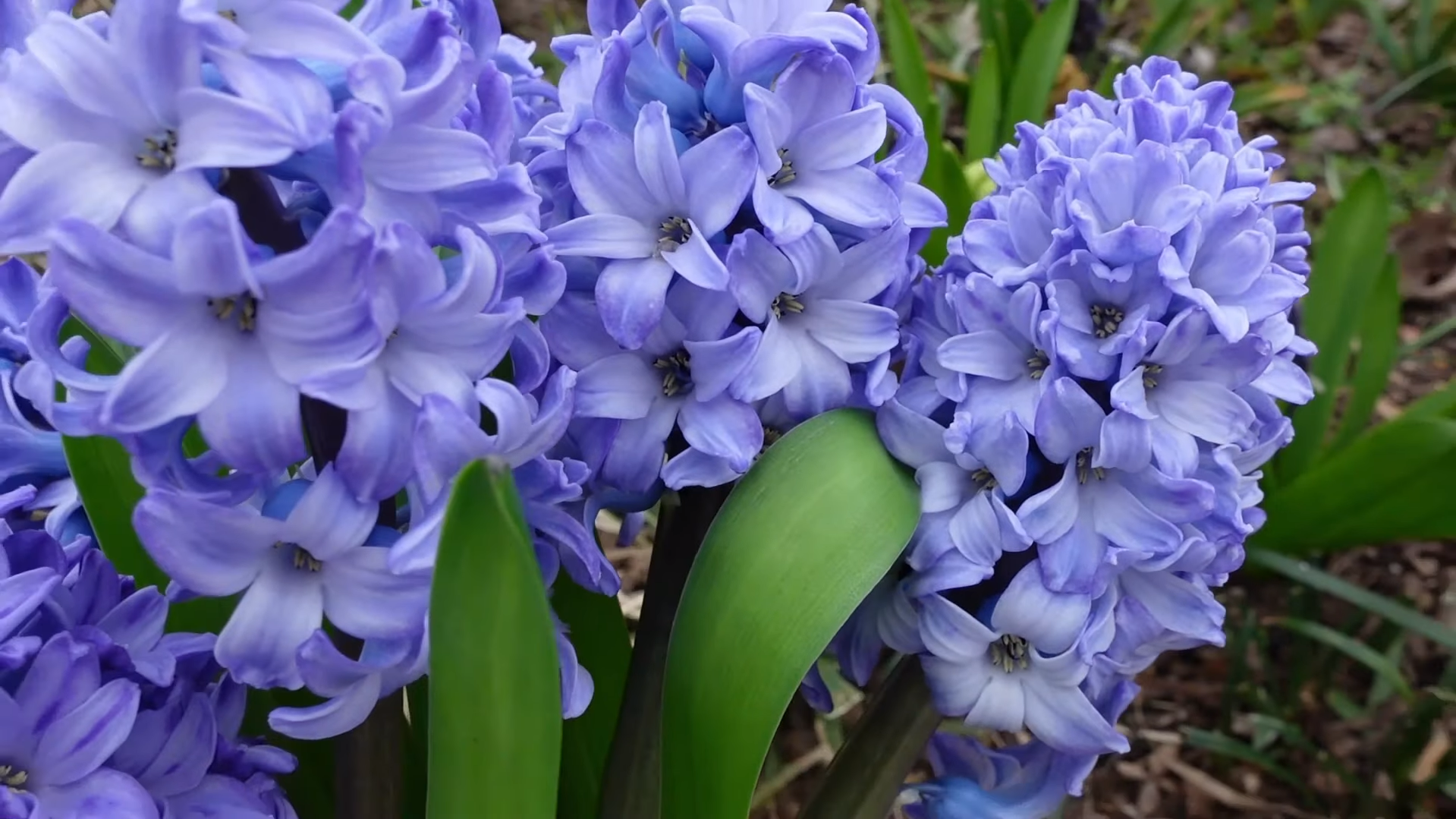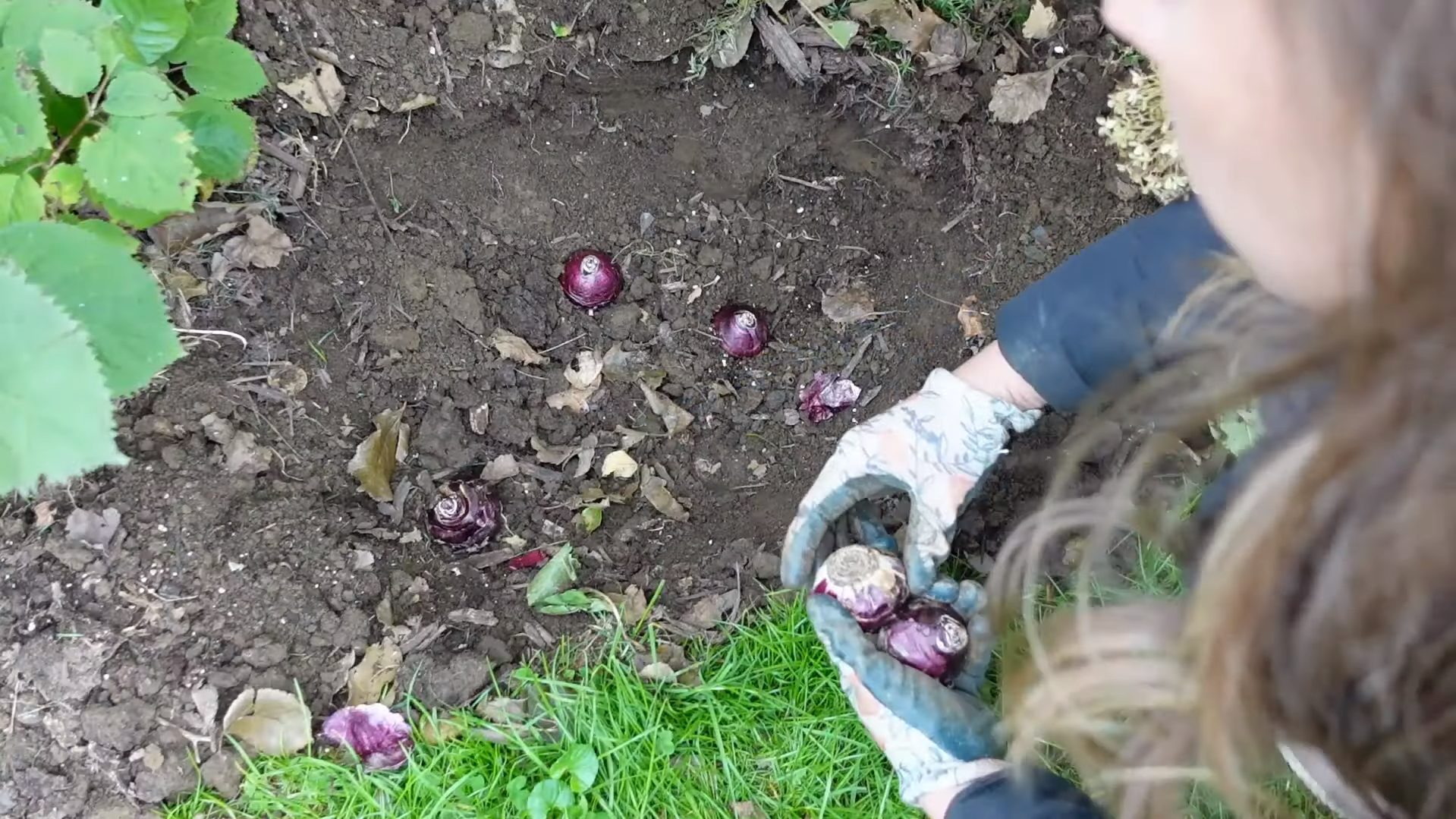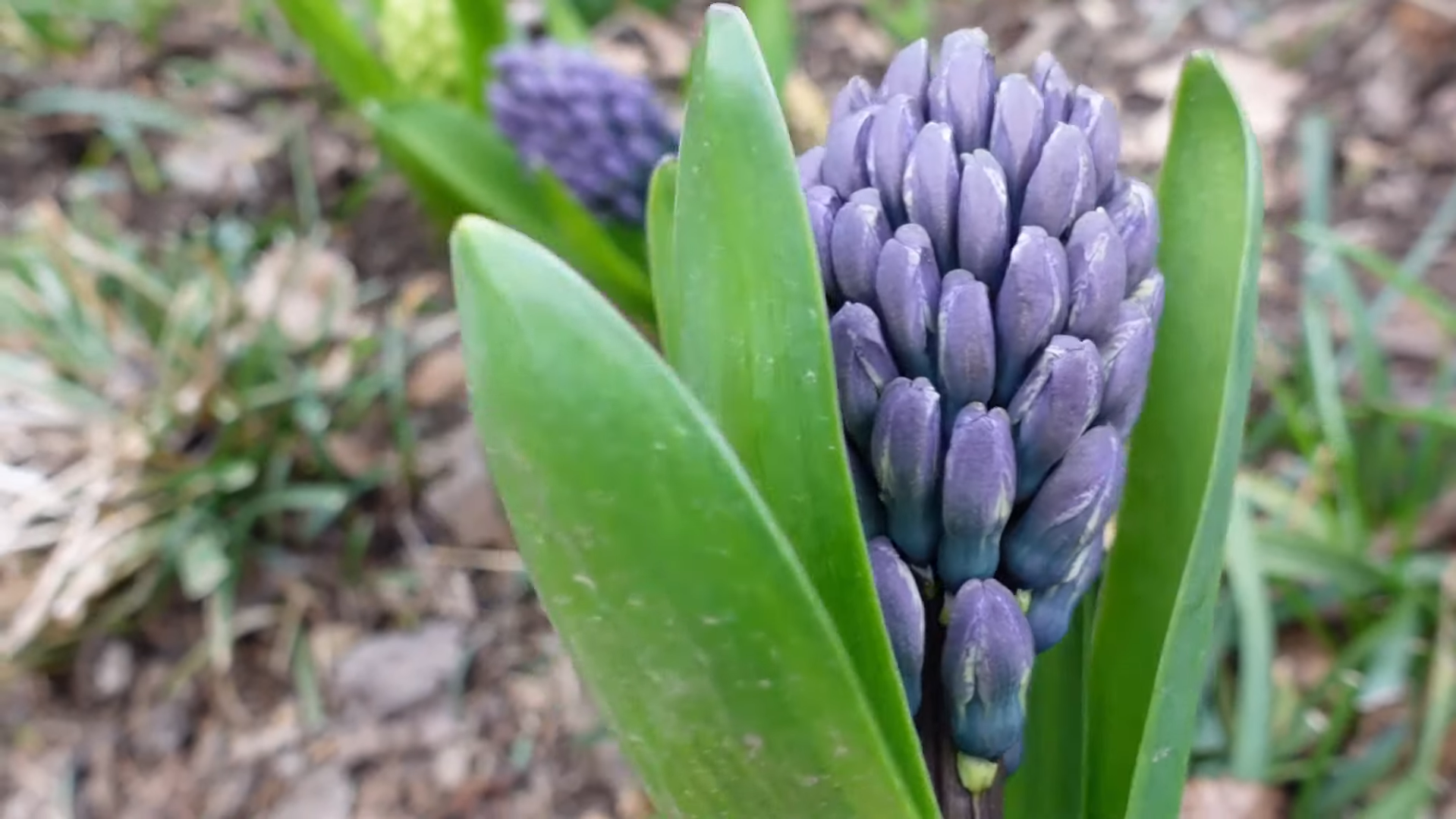Hyacinths are a favorite spring flower, treasured for their bright colors and sweet fragrance. These beautiful blooms can be enjoyed both indoors in potted containers and outdoors in sunny gardens. But have you ever wondered if it’s possible to grow hyacinths outside in the ground? Planting these delicate beauties is an option — but before you get started, there are some things you’ll want to consider first. In this blog post, we will discuss when and how to properly plant hyacinth bulbs so your outdoor garden can benefit from their beauty and scent!
Hyacinth
Hyacinths, scientifically known as Hyacinthus, are native to eastern Mediterranean regions, particularly Turkey, Lebanon, and northern Israel. [1] Their captivating beauty has been cherished since ancient times, with the flower’s name rooted in Greek mythology. It’s said that the flower sprang from the blood of a young boy named Hyacinthus, who was accidentally killed by Apollo, the god of the sun and music. The hyacinth has since been cultivated extensively in the Netherlands and is now widely available around the world, gracing gardens and homes with its vibrant colors and intoxicating aroma. These bulbs bloom in the spring, making them a favorite for those wishing to usher in the season with a burst of color and fragrance.

Characteristics & Types
Hyacinths are perennial bulbs, meaning they return each year without needing to be replanted. They typically bloom in mid-spring and their lush flowers can range from pastel hues to deep, rich colors. Each sturdy stem of a hyacinth plant will produce several star-shaped flowers all clustered tightly together, offering an impressive display of color. The leaves are usually broad and strap-like, providing a contrasting backdrop for the vibrant blooms. One of the defining traits of hyacinths is their intense fragrance, which is often strong enough to fill a whole room or garden with its sweet scent.
Multiple types of hyacinths are available, each showcasing its distinct characteristics and qualities.
- Common Hyacinth: The most prevalent variety of hyacinths is frequently observed in gardens and containers. These hyacinths typically form dense clusters of flowers, and they are available in a range of colors, including white, cream, pink, rose, apricot, lavender, cobalt blue, and deep purple.
- Dutch Hyacinth: Native to the Netherlands, Dutch hyacinths are known for their robust, large blooms and strong fragrance. They are ideal for garden beds, borders, and containers.
- Grape Hyacinth: Despite their name, grape hyacinths are not true hyacinths, but they bear a striking resemblance. They grow in clusters resembling bunches of grapes hence the name, and usually bloom in shades of blue or purple.
- Roman Hyacinth: Roman hyacinths are less common but cherished for their delicate, soft-colored flowers and graceful growth habit. They produce fewer but slightly more spread-out flowers on each stem, giving them a less dense appearance compared to other types.
Popularity of Hyacinth as an outdoor decoration
Hyacinths are immensely popular as outdoor decorations, and it’s not hard to see why. Their rich, jewel-like colors and intoxicating fragrance make them a standout in any garden. Gardeners often favor them due to their resilient characteristics and capacity to return year after year, establishing them as perennial favorites. They’re often used as border plants, where their close clusters of flowers create a dense, colorful display that truly announces the arrival of spring.
Hyacinths also make excellent additions to rock gardens, where their bright colors contrast beautifully with the gray and brown tones of the stones. In addition, their upright growth habit makes them a popular choice for container gardening, where they can be paired with other spring-blooming bulbs for a multi-layered effect. Whether planted en masse in beds or used as accent plants in containers, hyacinths are sure to add a touch of elegance and a burst of color to any outdoor space.
Considerations Before Planting Hyacinth Outside
Before you begin planting your hyacinth, it’s important to consider several factors to ensure optimal growth. First and foremost, you need to select the right location. Hyacinths thrive in areas that receive full sun to partial shade, and they prefer well-draining soil. It’s worth noting that while they can tolerate a range of soil types, they particularly appreciate a rich, loamy soil enriched with organic matter.
Second, bear in mind timing is key when it comes to planting hyacinth bulbs. They should ideally be planted in the fall, about six weeks before the first expected frost. This is attributed to their need for a period of cold dormancy to initiate blooming in the spring.
Lastly, consider the planting depth and spacing. A common guideline is to plant bulbs at a depth ranging from two to three times the height of the bulb and to leave approximately three inches of space between them to accommodate their growth.
Steps to Successfully Hyacinth Outside
Now, let’s proceed to explore the step-by-step instructions for planting and nurturing your hyacinths in an outdoor setting. Following these steps will help ensure your hyacinths flourish and fill your garden with vibrant colors and sweet aroma season after season.
Planting Timing
The optimal period for planting bulbs is during the autumn season, typically between September and December. This period allows the bulbs to undergo a necessary chilling period over the winter, which triggers the biological processes that lead to blooming in the spring. [2] The ideal planting time can vary depending on your region’s specific climate. As a rule of thumb, aim to plant the bulbs about six weeks before the first hard frost is expected in your area. This allows the bulbs enough time to establish roots before the ground freezes.
You can find frost date estimates for your region on various gardening websites or through your local extension service. Remember, timing is a crucial factor in successful bulb planting, so careful planning and observation of weather patterns can help ensure vibrant, healthy blooms when spring arrives.

Site Selection
Selecting the right site for planting hyacinths is crucial as it can greatly influence the health and longevity of the plants. The right site can ensure optimal sun exposure, soil quality, and drainage which are all essential for hyacinths to thrive. Plants thrive in areas that receive full sun to partial shade, ensuring they get a minimum of six hours of sunlight each day. Sunlight is pivotal for photosynthesis, a process through which plants produce food.
The site should also have well-draining soil to prevent water logging. Waterlogged soil can cause the bulb to rot, leading to poor growth or even death of the plants. To assess the drainage of a location, dig a hole approximately one foot deep and fill it with water. If the water is absorbed within an hour, the site exhibits good drainage.
In addition, consider the aesthetics of the site. Hyacinths, with their vibrant colors and intoxicating fragrance, can be a focal point in your garden. Therefore, choose a site where they can be easily seen and appreciated. Selecting a planting spot near a window or along a frequently traversed walkway is a wise choice, as it enables you to appreciate their beauty and fragrance even from within your home.
In conclusion, the best place to plant hyacinths is a sunny spot with well-draining, fertile soil where they can be admired for their beauty.
Soil Preparation
Selecting the appropriate soil and preparing it correctly is of utmost importance when it comes to planting flowers. They prefer loamy soil, which is a balanced blend of sand, silt, and clay augmented with organic matter. Loamy soil is fertile, well-draining, and capable of retaining moisture, all of which are beneficial for hyacinth growth.
To prepare the soil, start by clearing the site of any weeds or stones that could hinder the growth of the hyacinths. Once the area is cleared, dig a hole that is roughly 6 to 8 inches deep. This depth is ideal because it places the bulb at a level where it can benefit from the soil’s warmth during the colder months.
If you’re working with clay soil, which tends to hold water, you might need to make the hole a bit deeper and add some coarse sand or gravel at the bottom to improve drainage. Conversely, if you have sandy soil that drains too quickly, add some well-composted organic matter to improve moisture retention.

Bulb Planting Technique
When planting hyacinth, start by placing the bulb in the prepared hole, ensuring that the pointed end is facing upwards. This is where the stem will grow from. The flat, basal part of the bulb, from which the roots sprout, should be in contact with the bottom of the hole. Once the bulb is properly oriented, backfill the hole with soil, covering the bulb until only the tip remains visible.
After planting, give the area a generous watering. This helps the soil settle around the bulb and provides the hydration necessary for the bulb to start rooting. Make sure not to waterlog the area, as too much water can cause the bulbs to rot.
Watering and Mulching
Following the planting of your hyacinth bulbs, proper watering and mulching techniques can greatly enhance the health and longevity of your flowers. When it comes to watering, it’s key to maintain a balance. Hyacinths require a well-drained environment, thus overwatering can lead to bulb rot. Supply a deep watering at the time of planting to encourage root growth, and then reduce the watering frequency, ensuring the soil is slightly damp but not waterlogged.
Mulching, on the other hand, provides a myriad of benefits. Applying a 2-3 inch layer of organic mulch, such as shredded bark or compost, around your hyacinths can help conserve soil moisture, suppress weed growth, and regulate soil temperature. It is particularly beneficial in the winter, as it acts as an insulator, protecting the bulbs against harsh weather and freezing temperatures.
However, be mindful not to pile the mulch directly against the stem of the plants, as this can promote rot and invite pests. Apply the mulch around the plants, leaving a small gap around the stem. With the right watering and mulching practices, your hyacinths will be well-equipped to produce a stunning and fragrant display in the spring.

Caring for Outdoor Hyacinth
Caring for outdoor hyacinths need not be complex. One useful tip is to deadhead spent flowers; this involves removing the faded flowers to prevent the plant from wasting energy on seed production, allowing it to focus on storing energy for the next growing season. However, be sure to leave the foliage until it has yellowed and withered, as the leaves help generate energy for the bulb.
Another life hack involves the use of coffee grounds. Hyacinths prefer slightly acidic soil and used coffee grounds can help to lower soil pH. Sprinkle them around the base of your hyacinths to enrich the soil. [3]
Lastly, don’t forget about the importance of rotation. If you’ve been growing hyacinths in the same area for a few years and notice a decline in bloom quality, it may be time to rotate your bulbs to a different part of your garden. This can help prevent the buildup of diseases and pests in the soil.
By incorporating these easy tips and life hacks into your gardening routine, you can ensure that your hyacinths remain vibrant and healthy, season after season.
Decorative Ideas for Home and Garden
Hyacinths, with their vibrant colors and intoxicating scent, can be utilized in various ways to enhance the aesthetics of both your home and garden. In the garden, consider creating a hyacinth border along walkways or near entrances. This not only adds a splash of color but also fills the air with a delightful aroma, welcoming visitors to your home in the most natural way.
For a more dramatic effect, try “lasagna planting”. This technique involves layering different types of bulbs in a pot or in the ground to create a long-lasting display of color as different flowers bloom at different times. Start with late-spring bloomers like tulips at the bottom, add mid-spring bloomers like daffodils in the middle, and top with early-spring bloomers like hyacinths. This way, as one layer finishes blooming, the next one is ready to burst into life.
Finally, don’t forget about dried hyacinth flowers. They retain their fragrance long after they’re dried, making them excellent for homemade potpourri. Whether in the home or garden, there are countless ways in which you can use hyacinths to add beauty, color, and fragrance.
Frequently Asked Questions
Can I plant my hyacinth in the ground?
Yes, hyacinths can be planted directly in the ground. Choose a location with good drainage to avoid bulb rot, and plant the bulbs at a depth of approximately 4-6 inches, depending on the size of the bulb. After planting, water generously to help the soil settle around the bulb and start the rooting process. If planted correctly and cared for properly, hyacinths will reward you with a beautiful display of blooms in the spring.
Can you put potted hyacinths outside?
Yes, potted hyacinths can be placed outside. They are quite hardy and can tolerate a variety of outdoor conditions. However, they prefer a spot with full sun to partial shade, and the soil should be well-draining. If the weather is particularly harsh or if there’s a risk of a late frost, bring the pots indoors or provide some form of frost protection for them. Once the risk has passed, they can be returned outdoors. Remember to water your potted hyacinths regularly, but avoid overwatering, as this can lead to bulb rot.
Can hyacinths be left outside?
Yes, hyacinths can be left outside all year round. They are hardy bulbs and can tolerate cold winter temperatures. After the flowers have bloomed and faded, allow the leaves to remain until they turn yellow and wither. This period is important as the leaves photosynthesize and gather energy for the next year’s flowers. Once the leaves have withered, they can be removed. If you live in a region with very harsh winters, you may want to consider mulching over your hyacinth bed to provide extra protection for the bulbs. Please note, that while hyacinths are generally quite hardy, they do prefer well-drained soil and may rot in waterlogged conditions.
Do hyacinths need full sun?
Hyacinths do well in full sun but they can also tolerate partial shade. They bloom in early to mid-spring, a time when many trees are still without leaves, ensuring they often receive plenty of sunlight even in areas that become more shaded later in the year. That being said, planting in a spot that receives at least a few hours of direct sunlight each day will help ensure a robust and vibrant flowering display. If the location is too shaded, the hyacinths may become leggy as they stretch towards the light and the blooming might not be as intense or prolific.
Useful Video: How to Plant Hyacinths
Conclusion
Hyacinths are truly remarkable plants that brighten up our gardens and homes with their vibrant colors and intoxicating fragrances. From understanding how to care for them to learning how to incorporate their beauty into your home and garden décor, these charming bulbs offer endless possibilities. Whether you are a seasoned gardener or a novice, cultivating hyacinths can be a rewarding experience. These bulbs are hardy and adaptable, capable of thriving outdoors or indoors, in full sun or partial shade. By following the necessary care tips and guidelines, you can ensure that your hyacinths will bloom season after season, bringing joy and beauty into your space.
References:
- https://plants.ces.ncsu.edu/plants/hyacinthus-orientalis/
- https://elsa.com.ua/en/all-news/giacinty-posadka-osenyu-v-otkrytyj-grunt
- https://gardenandhappy.com/coffee-grounds-in-garden/












Leave a Reply
View Comments